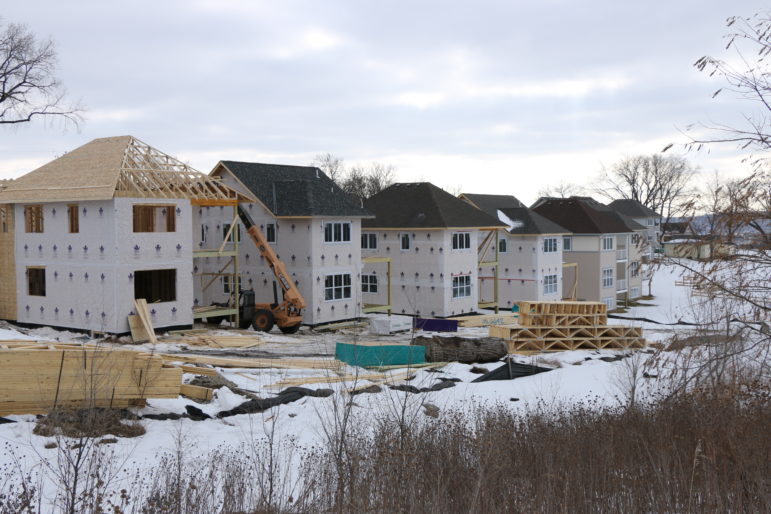
The polar vortex may be on its way out, but as climate change accelerates, extreme weather in the Midwest will continue to occur. With the use of natural gas for home heating at an all-time high this week, many energy experts are debating the need for increased supply and capacity on the grid. However, the demand side of the equation is often over looked in these extreme weather conversations. Currently 40 percent of the state’s energy output is consumed by our building sector—and the critical need for increased efficiency of these spaces is an essential piece in solving the clean energy puzzle.
With our cold winters and hot summers, Minnesota needs energy efficient buildings. And we are making good progress. Beginning in the 1970s, commercial and residential building codes have decreased the energy usage in new developments by nearly 50 percent. On top of this, energy retrofit programs slashed the amount of energy used in our buildings. In 2013 and 2014—the very same years we saw the last polar vortex—our state’s Conservation Improvement Program, led by our utilities, achieved electric and natural gas savings equaling approximately 1.7 million tons of avoided CO2 emissions. That’s the equivalent of removing over 325,000 cars from the road for one year. Better yet, these massive savings occurred completely through energy efficiency improvements to our existing buildings. And it’s cost-effective: a 2015 study on the economic impact of utility savings programs found that for every dollar invested, energy efficiency programs provide $4 to $4.30 in energy savings, environmental benefits, and new economic activity for Minnesota. Reducing energy use in our new and existing buildings greatly lessens the stress on our utility infrastructure, especially on the coldest days.
We can—and need—to do even more to meet our energy needs during cold snaps. An ambitious update to our state’s current building code is a pathway. Using the passive house performance standards, Minneapolis based TE Studios was able to retrofit a 1912 home in Northeast Minneapolis to use two-thirds of a baseline code-built home. The technology is here—and it’s time to deploy it at scale. It’s now possible for 100-year-old homes to outperform new construction by nearly 70 percent. Considering the burdensome expense of adding a new power plant to the grid or increasing natural gas capacity infrastructure (not to mention the carbon impact and the potential for stranding additional fossil-based assets), aggressive building codes and retrofit programs are a much more effective way to increase reliability of our existing utility systems.
These energy efficiency measures must be paired with beneficial electrification and carbon-free energy generation. Increasing energy efficiency in homes creates a tighter building envelope and traps combustion-based emissions from oil, propane, or natural gas-fired furnaces and cooking devices inside. These emissions are known to diminish indoor air quality, negatively impacting our health. Converting to super-efficient, all-electric appliances will allow us to further decrease heating demands on the grid during the coldest days and provide safer, cleaner environments for Minnesotans to work and live. Powering these devices with an ever-cleaner mix of electricity power by wind and solar will additionally hasten our transition to a carbon-free economy.
![]()
Fresh Energy firmly believes that our clean energy economy will come through carbon-free energy from wind and solar, robust energy efficiency programs, and the smart deployment of beneficial electrification. Ultra-efficient homes and buildings, climate-controlled with air source heat pumps—even on the coldest of days—are possible.
For more information about beneficial electrification and our strategic policy framework, please read my colleague’s, Margaret Cherne-Hendrick, latest piece.
